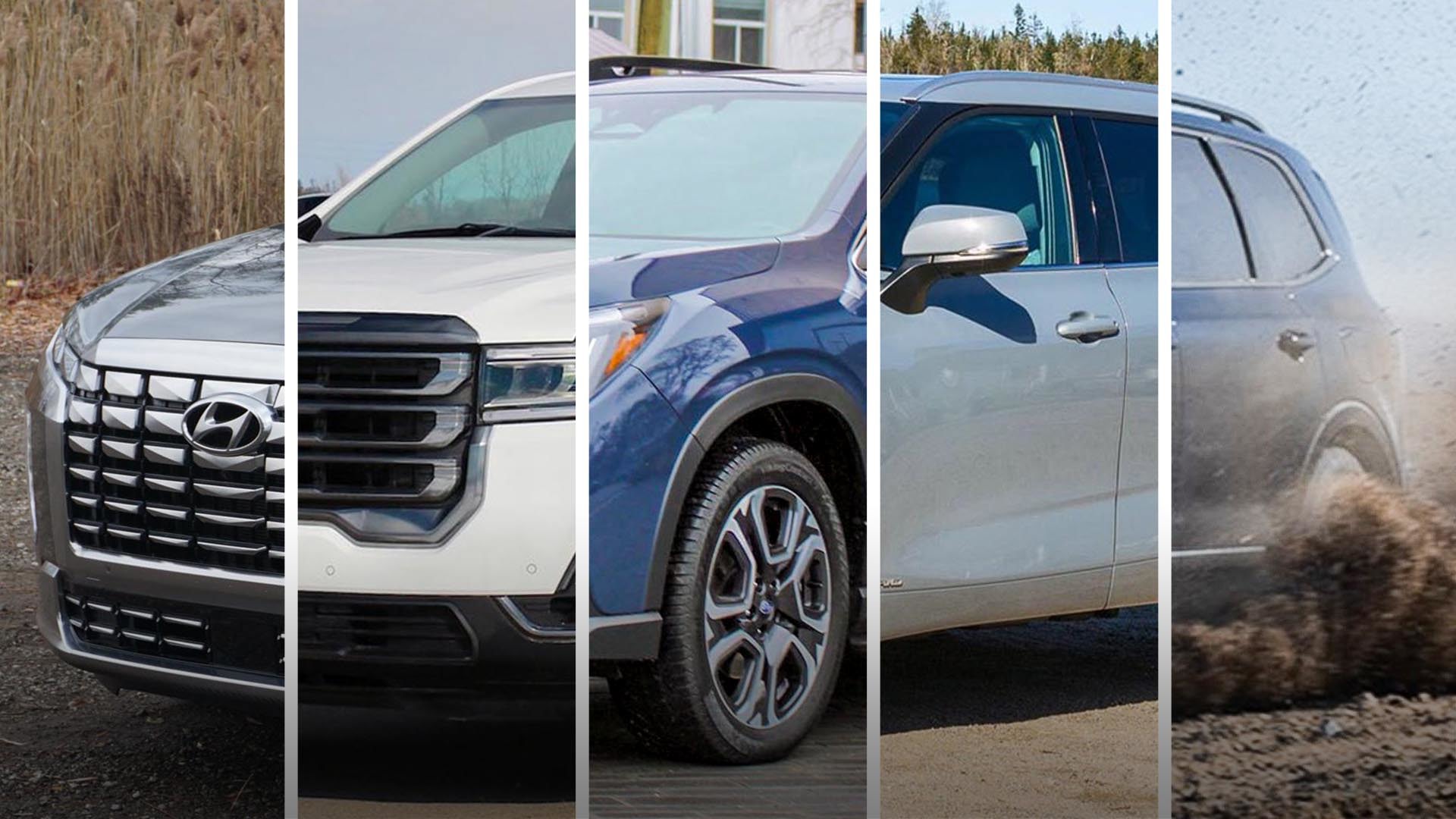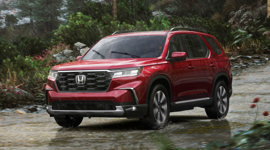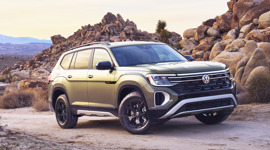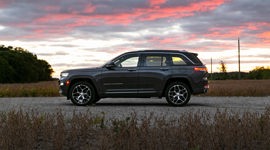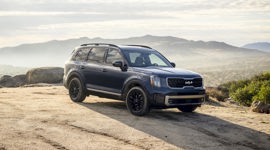Inflation has been inflicting a disproportionate share of pain lately, but the reality is that just about everything is outrageously expensive these days.
Nowhere is that more evident than the auto industry, with affordability eroding rapidly. Case in point: there are only three brand new cars in Canada that can be bought for less than $25,000 including fees and taxes. Of course, the issue only gets worse when there’s more vehicle to pay for in the first place. Like, say, a hulking three-row SUV.
These family haulers were never among the most affordable models on the market to begin with, and that trend has only continued as automakers have expanded their offerings to include an assortment of smaller sport utilities. But families in need of space know there’s simply no substitute – well, aside from minivans, but that’s another story altogether.
There’s a ton of options in this segment to choose from, but advertised prices don’t reflect what it actually costs to park one in the driveway. That’s why this list isn’t just about AutoTrader’s top picks, but also their effective affordability; that is, how much the average Canadian will need to spend on one.
That also means there are a few fine points to go over, starting with how we landed on the dollar figures below. For starters, we took the manufacturer’s suggested retail price (MSRP), or the price the automaker recommends, and added the associated extras: freight, A/C tax, and dealer admin fees, to name a few.
From there, we added tax, which is far from standardized across the country. That’s why we used a range starting at five per cent for Alberta and the territories (Yukon, Northwest Territories, and Nunavut), all the way up to 15 per cent for the Maritimes (New Brunswick, Prince Edward Island, Nova Scotia, and Newfoundland and Labrador).
Of course, there are other factors, too, like the interest accrued over the course of a finance term, or any incentives that could reduce the asking price. Likewise, some dealers may choose to sell for less and others more. That’s why this list should be considered a general guide – albeit one that fills in a lot of blanks – rather than a definitive fact sheet. If nothing else, it provides a clearer picture of how to budget that next big purchase.
1. Hyundai Palisade
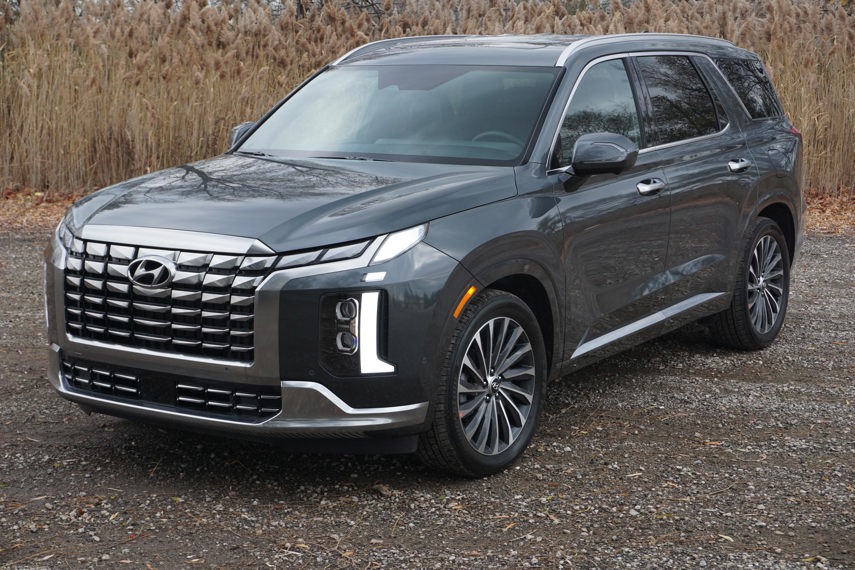
The Hyundai Palisade is among the most stylish three-row SUVs out there, with updated looks that promise to keep it that way well into the future. Of course, curb appeal isn’t often the leading reason to shop for a sport utility like this; instead, it’s the space they provide that’s most attractive, and in that way the Palisade does fine – no more, no less.
The third row itself is a little cramped, but small children should fit with relative ease. Perhaps more important is how easy it is to access the rearmost seats, with simple one-touch switches that tilt and slide the middle row. There are also electric releases in the cargo area to stow the second row, resulting in 2,447 L of space for stuff.
On the subject of stuff, there’s lots of it here – even in the entry-level Preferred trim that happens to be the only one that stays under the $60,000 price cap when taxes and fees are taken into account. The steering wheel is heated, as are the front and second-row outboard seats; there’s a big 12.3-inch touchscreen with built-in navigation, as well as Android Auto and Apple CarPlay connections; and there’s a whole host of advanced safety and driver assistance systems including adaptive cruise control.
When it comes to the basics, this Hyundai has all-wheel drive, as well as a 3.8L V6 engine. Towing capacity is capped at 2,268 kg (5,000 lb), plus there’s load-levelling rear suspension to compensate for sag, and a selectable tow mode that optimizes the powertrain when there’s weight hooked up to the back.
The 2023 Hyundai Palisade Preferred starts at $47,799, while any colour but white adds $250 to the price tag and freight tacks on another $1,975.
All-In Price: $53,024–$58,096 (depending on province or territory and tax rate)
2. Toyota Highlander Hybrid
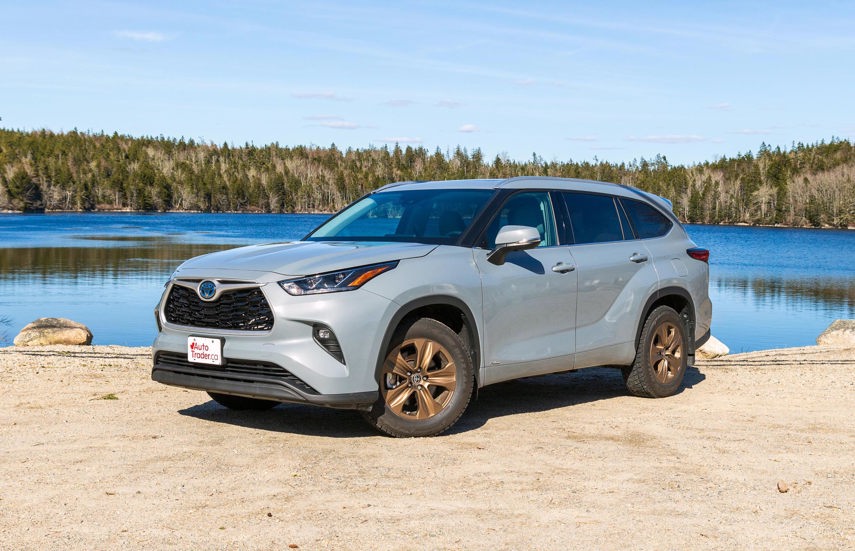
The Toyota Highlander Hybrid is the only gas-electric vehicle on this list – and it also happens to be really good. With all the space of a typical three-row to go with the efficiency of a compact car, there’s plenty to like.
Like the Palisade, only the entry-level LE trim falls under our $60,000 price limit with taxes and fees included, but the feature count is nearly as generous as the Palisade’s. There’s a full advanced safety suite, so stuff like blind-spot monitoring with rear cross-traffic alert and lane-keeping assistance, as well as adaptive cruise control; plus an eight-inch touchscreen, Apple CarPlay and Android Auto connections, subscription-based satellite radio, and heated front seats.
The hybrid powertrain pairs a 2.5L four-cylinder gas engine with a few electric motors – twin motor-generators under the hood, and one in the back that drives the rear wheels. The rear-mounted motor is engaged during acceleration and cornering, or when the front wheels start to slip; otherwise, this SUV relies on what’s under the hood for motivation, remaining in front-wheel drive to reduce fuel consumption.
The Highlander Hybrid is nearly as roomy as the Palisade, with no space penalty from all the electrical components. The battery pack is under the second-row seats, while the rear-mounted electric motor is tucked low enough under the cargo floor that the 453 L with all seats upright is the same as the gas-only Highlander. The only drawback is the 1,588 kg (3,500 lb) it can tow, which is the least of all the SUVs on this list.
The 2023 Toyota Highlander Hybrid LE starts at $48,150, while freight is an extra $1,890. Black and grey are no-charge paint choices, while white is a $255 upgrade.
All-In Price: $53,290–$58,257
3. Subaru Ascent
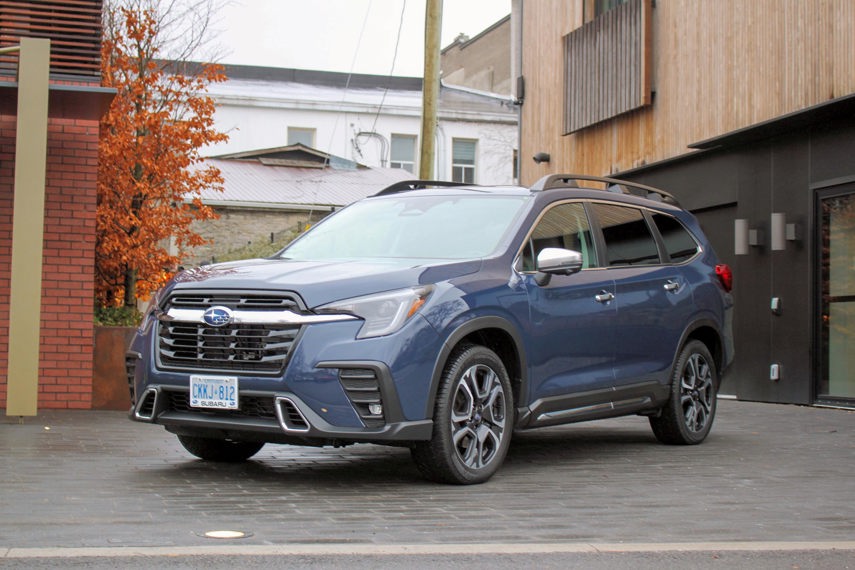
This is the value pick of the bunch, with a few versions of the Subaru Ascent to pick from including the mid-grade Onyx. That means there’s quite the spread in terms of options and extras, although even the base Convenience includes a decent selection of stuff. There’s a vertically oriented 11.6-inch touchscreen that has wireless connections for both Apple and Android phones, heated front seats, and a full advanced safety suite.
Moving up from there adds stuff like a heated steering wheel, second-row captain’s chairs (standard in the Onyx; a no-charge option in the Touring), rear climate controls and vents for both rows, and Subaru’s connected services that provide remote access to the vehicle via a paired smartphone.
Power comes from a turbocharged four-cylinder that makes 260 hp and 277 lb-ft of torque, and it’s paired with an automatic continuously variable transmission (CVT). Normally, that would be a sore spot, but Subaru has all but mastered these gearless units to make them behave almost like traditional transmissions. Like the rest of the vehicles on this list, all-wheel drive is standard.
Cargo room is similar to both the Palisade and Highlander Hybrid, with 458 L behind the rearmost seats and 1,232 L with them folded. It’s only when both back rows are stowed that this Subaru comes up short, with just 2,061 L available (the base trim has 2,140 L). On the other hand, it’s rated to tow the same 2,268 kg (5,000 lb) as the Palisade – although the Convenience lacks the equipment to do so, with a rating of just 907 kg (2,000 lb).
Pricing starts at $40,995 before fees and taxes for the 2023 Subaru Ascent Convenience, while the Touring is $45,495. Then there’s the Onyx trim that’s $47,295.
All-In Price: $45,687–$57,305
4. GMC Acadia
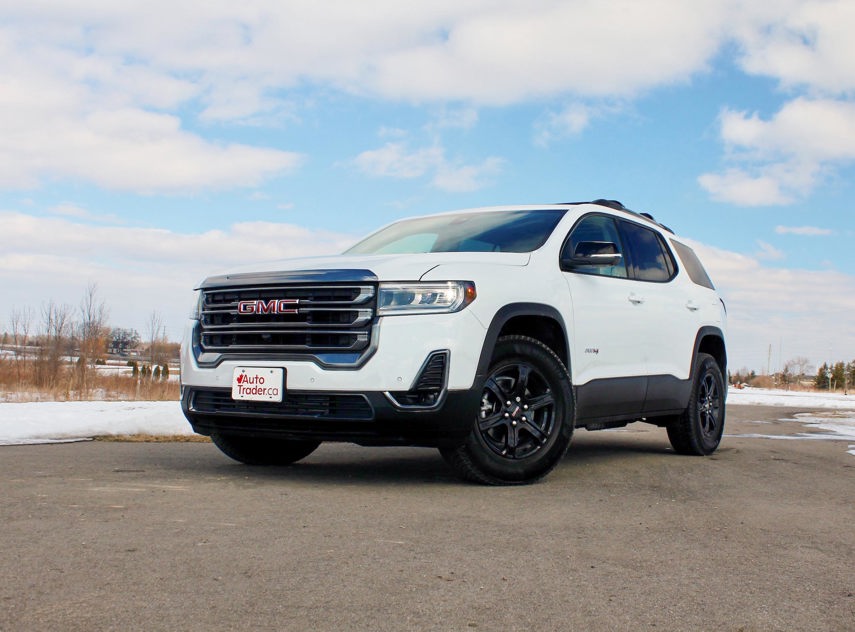
The GMC Acadia is the smallest of the bunch here, but it punches well above its weight in terms of functionality. For starters, it can be had with the choice of turbocharged four-cylinder or naturally aspirated V6 power, while the space inside is nearly as generous as the Ascent’s in spite of measuring a fairly significant 86 mm (3.4 in) shorter from bumper to bumper.
Likewise, passenger accommodations are in the same ballpark as those of the even bigger Palisade, making the Acadia an appealing – and affordable – alternative. If there’s one area it comes up short it’s towing, with a maximum capacity of 1,814 kg (4,000 lb).
Another shortcoming is the lack of adaptive cruise control; it’s not offered in either of the two trims that come in under $60,000 with fees and taxes. Everything else is included, however, with forward collision warning and automatic emergency braking, lane-keep assist, and blind-spot monitoring with rear cross-traffic alert.
In terms of comfort and convenience features, heated front seats are standard, and so is active noise cancelling, the subscription-based OnStar suite of connected services, an eight-inch touchscreen infotainment system, Apple CarPlay and Android Auto connections, and tri-zone automatic climate control, to name a few.
Pre-tax pricing starts at $42,753 for the 2023 GMC Acadia SLE with a turbo motor under the hood, while the V6 version starts at $43,348. Meanwhile, the SLT trim starts at $48,053 with the four-cylinder engine and $48,598 with the six-cylinder. Regardless, freight adds $1,995 to all of them.
All-In Price: $47,772–$59,101
5. Kia Telluride
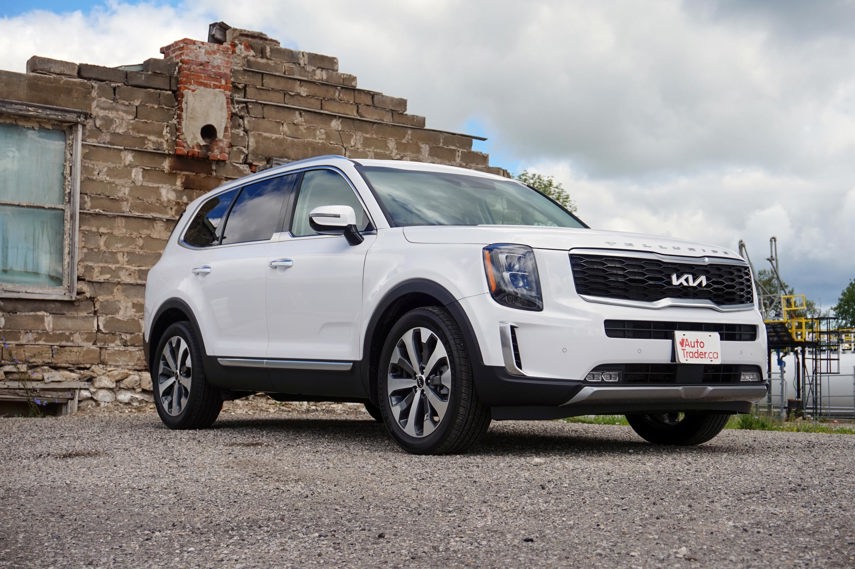
As far as the fundamentals go, the last vehicle on this list is strikingly similar to the first one. However, they’re different enough to earn their respective spots. And when it comes to the Kia Telluride, it’s all about making a statement.
This might have the most presence of any SUV like it, with the Telluride’s design emphasizing its size. There’s a bit more cargo room than the Palisade with which it shares a platform, but passenger space is just about identical. That means a slightly cramped third row, but more than enough room for most families on the go.
It uses the same six-cylinder engine and eight-speed automatic transmission as the Palisade, and it can pull the same 2,268 kg (5,000 lb). Features are similar, too, with a heated steering wheel and front seats (but not in the second row, it’s worth noting), one-touch seats, tri-zone automatic climate control, and a 12.3-inch touchscreen with wired Android Auto and Apple CarPlay connections.
Only the base trim qualifies under the $60,000 price cap set here, and even then it barely squeezes in for those that pay the highest tax rates. The 2023 Kia Telluride EX starts at $49,995, with black the only no-charge colour; the rest add $250. Freight’s another $1,900.
All-In Price: $54,618–$59,794
Final Thoughts
Of course, there are others in the segment that are priced similarly to the selection here, but these five happen to be among the best in the bunch. And while they only get better as the price climbs, budget-conscious shoppers would do well to start with any of the SUVs on this list. Those who don’t need all the space these three-rows offer can also check out some of the others in this series that could save quite a bit of cash along the way.

